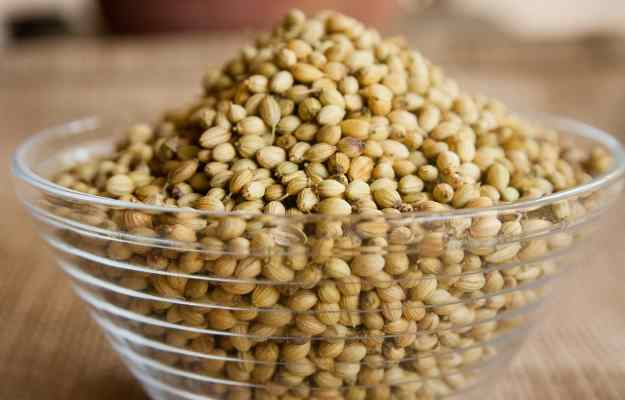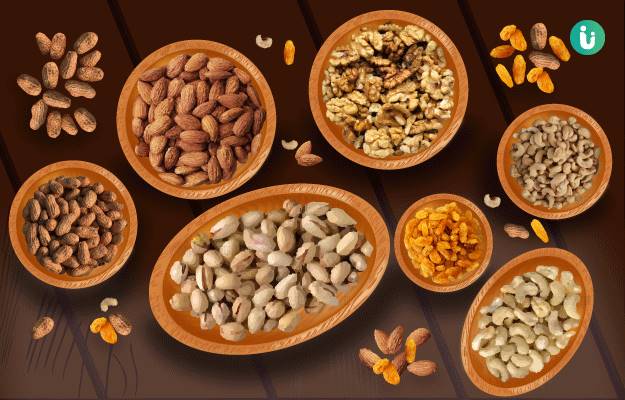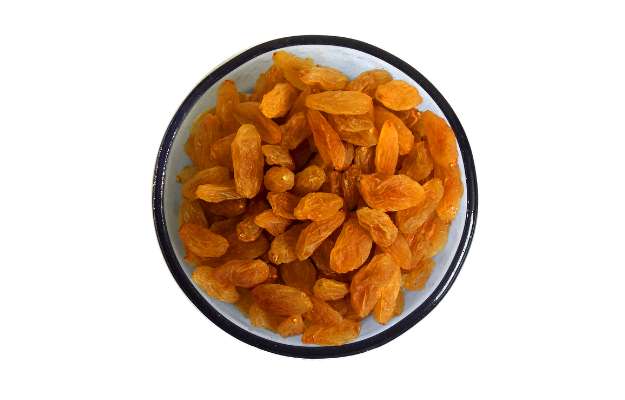Betel nut chewing is a primary habit in India and other Asian countries with little awareness of its consequences making it a major public health problem. While the habit is seen throughout, certain socioeconomic communities are more involved with it being a prominent tradition among them.
There are several ways in which betel nut is used other than its chewable forms. This includes forming a quid and placing it anywhere in the oral mucosa or rubbing it over, which increases its contact time with the tissue and is an injurious habit. Consumption of betel nut in any form, be it chewing, placing, rubbing or eating along with a betel nut leaf are all detrimental to your overall health.
Terming all these habits under a broad term of betel nut chewing, it has been established that these habits significantly contribute to oral cancer and other types of cancer like that of the pharynx or the oesophagus.
Despite its proposed benefits in ancient texts, it is best that you keep a distance from this destructive habit for your best health.
This article will highlight the major risks of betel nut chewing, only after deeply exploring this habit and its presumed benefits.
- Some basic facts about betel nut
-
Side effects of betel nut chewing
- Betel nut chewing causes dental stains
- Betel nut chewing causes destruction of tooth
- Betel nut chewing causes periodontitis
- Betel nut chewing causes oral submucous fibrosis
- Betel nut causes oral cancer
- Betel nut chewing causes dependence
- Betel nut causes coronary heart disease
- Betel nut causes infertility in men
- Areca nut during pregnancy
- Other side effects of areca nut
Some basic facts about betel nut
Areca nut or betel nut is basically grown as a palm tree. It is a long plant about 15 metres in length and has no branches like a traditional palm. It bears egg-sized fruits, which contain the seed or the nut, which is then used. The nut is 5 cm long and has a green colour initially when it is soft. As it grows old, the colour becomes yellowish brown and has a tough, fibrous husk. Usually, this is when the nut is used by most.
- Scientific name: Areca catechu
- Family: Palmaceae, Arecaceae
- Common name: Betel nut, Betel, Siri supari, Supari, Arcea nut
- Native region and geographical distribution: Areca palm commonly grows in tropical regions throughout the world and is grown in the tropical Pacific, Asia and parts of Africa. It is widely grown in India in the North Eastern and Southern states.
- Parts used: Nuts and seeds
- History of use: History of betel quid chewing can be dated back to the pre-Vedic days and since then it has been consumed for recreational and spiritual purposes and has more so become a habit among its users. The custom of betel nut chewing began 2000 years back and it is believed that 10% of the world’s population is indulgent in this habit. Ancient and Sanskrit literature point to the fact that betel chewing has been a native tradition in India.
- Reasons for use:
- Betel nut is primarily used as a mouth freshener and is consumed after food.
- It is believed to improve digestion and is mainly consumed due to its mild euphoric benefits.
- It has been suggested that the use of betel leaf has inhibitory effects on the growth of certain types of cancer, but, these claims have not been quite proven.
- Some also use betel nut due to a belief in its aphrodisiac properties. But, the converse is true.
- Although it has some analgesic properties, these can be utilised by the topical application of betel leaf as an antiseptic and an anti-inflammatory instead of consuming it orally.
- Forms consumed: Areca nut can be consumed in a variety of forms. These are:
- Areca nut alone
- Areca nut with areca leaf
- Areca nut with slaked lime
- Areca nut with tobacco
It is important to note that consuming areca nut in any form is damaging but the addition of slaked lime or tobacco is aggravating.
Side effects of betel nut chewing
Despite its widespread use since the ancient times and the supposed benefits, the habit of betel nut chewing is not quite a good one. It has a number of oral health risks and also affects your overall health. Here is why you must stop with this habit right away:
Betel nut chewing causes dental stains
It is very easy to spot a regular betel nut chewer by looking at the reddish discolouration of their teeth, lips, mucosa and gums. Often, with time, these worsen and get inscribed within your tooth structure forming intrinsic stains, which are more difficult to get rid of. Before this habit takes a toll on your health and appearance, it is recommended to stop.
Betel nut chewing causes destruction of tooth
Attrition refers to the gradual wearing off of tooth structure whereas abrasion refers to loss of hard structure of the tooth. While these may be a natural consequence of ageing, the excessive use of betel nut worsens this concern and aggravates the rate.
Why you must be worried about attrition and abrasion is because your tooth will gradually start wearing off, which will increase problems of sensitivity. You have to agree sensitivity to any kinds of food is a complete wrath.
Other than this, obviously your aesthetics will be affected and gradually may be that the loss of structure is so severe that you are hardly left with any tooth to help with chewing.
Betel nut chewing causes periodontitis
Peridontitis refers to the inflammation and infection of the gum and surrounding structures. Over time, it causes loss of supporting bone.
It has been recognised that the habit of betel nut chewing significantly contributes to periodontitis. This is more severe among individuals who place betel nut or supari between the teeth and the mucosa causing a pocket to form in the area. This pocket contains infectious agents, which worsen the problem and cause other infections in the area.
Peridontitis will not only cause your mouth to have an offensive odour (if that was not already an embarrassing problem) but also cause loss of tooth over the course of the time. As periodontitis progresses in the area where you usually keep the quid, you will find it immensely hard to eat because the tooth will be mobile.
Further, malodour or oral halitosis has been recognised to pose a psychological problem and also leads to lack of self-esteem among those affected. So, it is best to stay away from any habits that can cause this.
Betel nut chewing causes oral submucous fibrosis
Oral submucous fibrosis or OSMF is characterised by an inability or a difficulty in opening the mouth due to excessive growth of fibrous tissue. The palpable bands formed around the mouth may or may not be painful but will definitely stop you from opening it. Imagine the discomfort!
It has been well-established that betel nut chewing is the primary cause of this condition with maximum cases reported among chewers. So, all you have to do to minimise your risk is stop with this habit.
OSMF is a precancerous lesion, that is, it has the potential to convert to a malignant tumour. So, if you experience mild to moderate discomfort in opening your mouth or your mouth opening is gradually diminishing, it is high time to say goodbye to the habit of betel nut chewing and visit a dentist.
Betel nut causes oral cancer
Any type of cancerous lesion in the oral cavity is termed as oral cancer. It may form anywhere within the mouth including your gums, tongue or the mucosa.
It is unsurprising that betel nut chewing causes oral cancer. Often, this is preceded by a precancerous lesion in the form of OSMF. It has been determined that precancerous lesions have a higher risk of progressing to cancer with the use of betel nut.
Additionally, betel nut is an independent risk factor for oral cancer and has been listed as a Group 1 carcinogen by International Agency of Cancer Research (IACR). When combined with lime, which is commonly added to betel nut, this risk is aggravated.
If you happen to indulge in other deleterious habits like smoking or the use of smokeless tobacco, the risk is most likely to be added up.
Betel nut chewing causes dependence
Dependence and addiction are one of the major concerns of betel nut chewing with daily users experiencing a feeling of euphoria associated with its use. These users have also reported a feeling of well-being, warmth and an improved work performance with this habit. After all, it’s termed as a habit for a reason.
These experiences are prevalent due to its effects on the brain owing to which stopping this habit becomes painful.
When trying to discontinue, typical withdrawal symptoms in the form of a headache, sweating and palpitations have been reported by the users. Regular paan consumers complained of an immense difficulty in abstinence and resorting to a morning paan to ease these symptoms.
Studies have found that betel nut dependence increases the predisposition to seizures, which may be unresponsive to drugs.
In sufficiently higher doses, areca nut has been found to cause neuronal injury leading to cell death. This can be ascertained to an increased oxidative stress and reduced antioxidant action in the body. So, while users enjoy this habit, they are slowly progressing towards a bigger harm.
Betel nut causes coronary heart disease
Studies have found that betel nut chewing increases heart rate and systolic blood pressure even among non-habitual users. Since this effect is irrespective of the frequency of use, it is best to stay away from consuming areca nut even occasionally.
However, an increased frequency of intake has been evidenced to increase the risk of coronary heart disease.
This occurs because areca nut has a blocking effect on high-density lipoprotein, which is considered to be a good cholesterol and is protective of the heart. Further, it increases the availability of low-density lipoprotein, which is infamous as a bad cholesterol and is conducive to the growth of atherosclerotic plaque.
While areca nut chewing predisposes you to coronary heart disease, it is also a risk factor for cardiac arrhythmia. So, it is better to stay away from its use especially if you already have a high cholesterol.
Betel nut causes infertility in men
Betel nut has an effect on male sexual hormones and androgens. Excessive use of betel nut causes an increased expression of androgens, which can cause hyperplasia (an increase in the number of cells) and hypertrophy (an increase in size). This leads to an enlargement of the prostate gland, which is otherwise a common condition in old age.
Not just this, areca nut consumption may also affect your fertility.
Studies prove that areca nut significantly contributes to a decreased sperm motility and count, which causes sperm abnormalities. It has been ascertained that a long-term use can lead to infertility in men.
Areca nut during pregnancy
Consumption of areca nut is highly unsafe during pregnancy with studies reporting of ill-effects on infants. Mothers who consume areca nut have a high risk of preterm delivery.
Further, low birth weight and foetal defects are what your baby holds the risk of if you do not stop with this habit. There is also an association between maternal betel nut consumption and an increased risk of malignancy in the baby, which gives reason enough to discontinue.
Other side effects of areca nut
- Loss of appetite is commonly noted among areca nut users.
- Some studies suggest that areca nut consumption increases the risk of oesophagal and pharyngeal cancers and even laryngeal and lung cancer.
- Hepatocellular carcinoma and cirrhosis of the liver are commonly noted in areca nut chewers.
- Excessive use of areca nut can cause bronchoconstriction leading to respiratory problems.
- The use of areca nut is also associated with a risk of diabetes, hypertension and high cholesterol.
- Severly high doses of areca nut can cause toxic symptoms leading to dyspnea, tachycardia (rapid heart rate), tachypnea (rapid breathing), hypotension, nausea, vomiting and dizziness. It is very important to consult your doctor in case on these symptoms.
Medicines / Products that contain Supari
- Baidyanath Pipalyasava - ₹199
- Cipzer Safoof Sailan 50 gm - ₹449
- Cipzer Halwa-E-Salab 250 gm - ₹449
- Baidyanath Nagpur Supari Pak 250gm - ₹204
- Dabur Supari Pak 125gm - ₹121
- Dabur Supari Pak 250gm - ₹121
- Cipzer Majun -E-Mochras 125 gm - ₹449
- Baidyanath Nagpur Supari Pak 100gm - ₹93
- Cipzer Supari Powder 150 gm - ₹449
- Mast Calcutta Paan 180gm - ₹255
- Mast Paan Masala 180gm - ₹221
- Dindayal Aushadhi Supari Pak - ₹235
- Mast Meetha Paan 180gm - ₹230
- Mast Dry Green Paan 180gm - ₹255
- Chandigarh Ayurved Centre Stri Poshak Syrup - ₹144
- Yamuna Pharmacy Anthelmin Syrup - ₹180
- SK Supari Pak - ₹90
- Patanjali Divya Khadiradi Vati - ₹45
- Patanjali Divya Vishtindukadi Vati - ₹40
- Himalaya Himplasia Tablet - ₹142
- Chandigarh Ayurved Centre Stri Poshak Capsule - ₹359
- Dharmani Intimate Vaginal Capsule - ₹864
- Mast Banarasi Paan 180gm - ₹153
- Dr.Axico Supari Pak Help in Periods Pain Relief, White Discharge, and Bleeding 200gm - ₹954
- Deep Ayurveda Lodhrasava 450ml - ₹195
- Deep Ayurveda Pippalyadiasava 450ml - ₹230
- Dharishah Ayurveda Suparipak Churan - ₹75
- Hamdard Halwa Supari Pak - ₹125
- Hamdard Majun Mochras - ₹52
References
- National library board. Betel chewing. Singapore
- Rajendra Toprani and Daxesh Patel. Betel leaf: Revisiting the benefits of an ancient Indian herb. 2013 Jul-Sep; 2(3): 140–141. PMID: 24455591
- IARC Working Group on the Evaluation of Carcinogenic Risk to Humans.Betel-quid and Areca-nut Chewing. Betel-quid and Areca-nut Chewing and Some Areca-nut-derived Nitrosamines. Lyon (FR): International Agency for Research on Cancer; 2004. (IARC Monographs on the Evaluation of Carc
- World Health Organization [Internet]. Geneva (SUI): World Health Organization; A review of areca nut
- Warnakulasuriya S, Trivedy C, Peters TJ. Areca nut use: an independent risk factor for oral cancer. 2002 Apr 6;324(7341):799-800. PMID: 11934759
- Apurva Garg, Pankaj Chaturvedi, and Prakash C. Gupta. A review of the systemic adverse effects of areca nut or betel nut. 2014 Jan-Mar; 35(1): 3–9. PMID: 25006276














